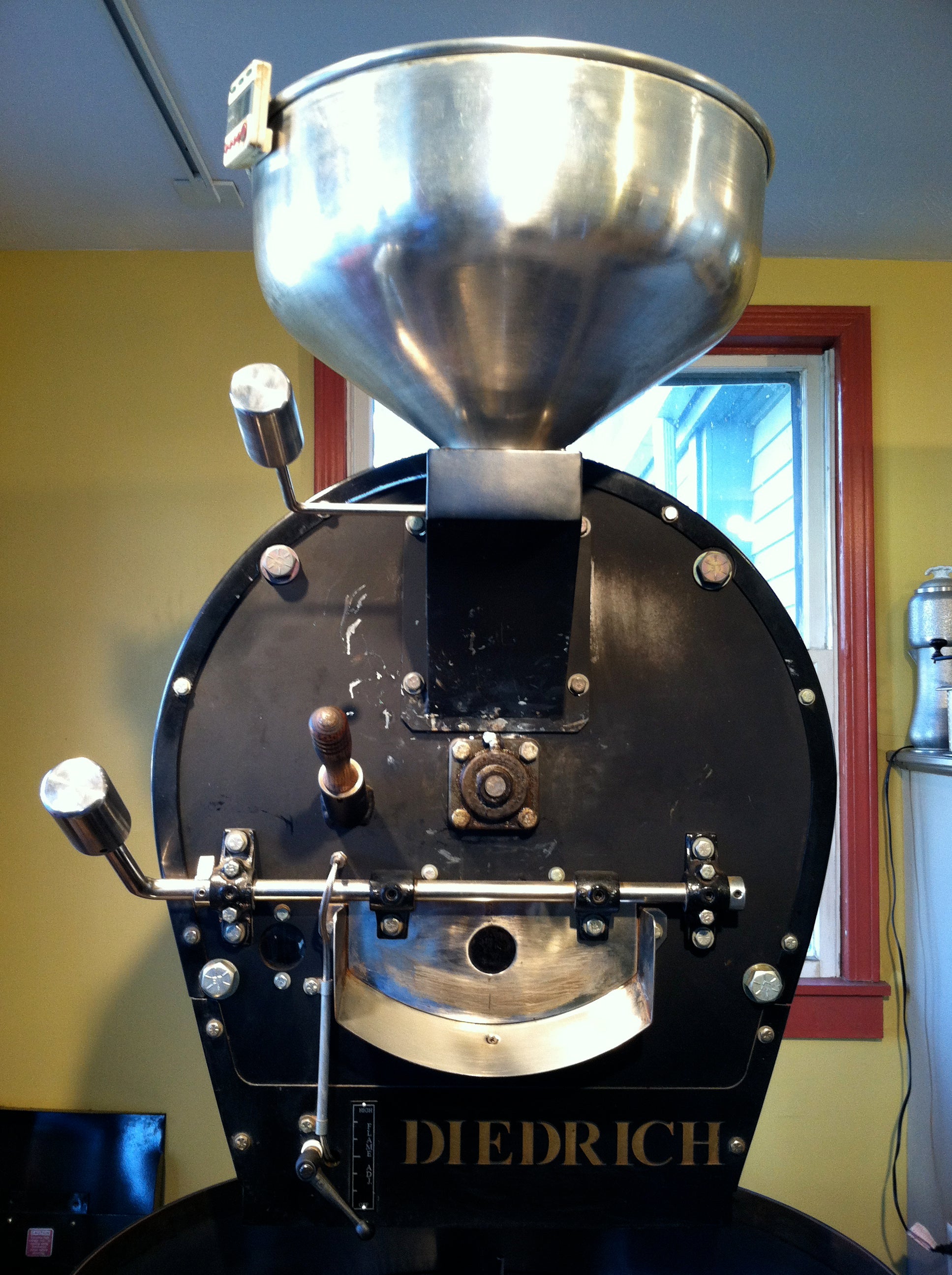Many professionals in the coffee industry, including A&E owner Emeran, use the process of coffee cupping to assess a particular coffee. The cupping practice uses a standardized process of tasting the coffee in order to observe its particular tastes and aromas that are brought out in the brewing process. This is a standard practice used by Emeran when visiting coffee suppliers, as it allows a process for quality assessment when selecting coffee that will ultimately be served in the café. It is also a practice used to judge brewing competitions such as the Big Western (or Big Eastern) Brewers Cup where Emeran has served as a judge. It is also a process that must be perfectly executed when completing the certification process to become a licensed Q Grader.
One tool to help visualize the range of tastes and aromas encountered when cupping or tasting coffee is the Flavor Wheel. The Specialty Coffee Association of America maintains that the Flavor Wheel “ develops a glossary of coffee terms based on sensory science and has become the standard that most cuppers today use in describing the coffee they buy and/or sell.”
The Flavor Wheel is split in half between two hemispheres – Tastes on the left side and Aromas on the right side.

The Flavor Wheel provided by the SCAA.
Taste:
The innermost part of the wheel breaks taste down into the four basic tastes – sour, sweet, salty, bitter. From there, each basic taste expands to encompass distinct flavors. Taste itself is perceived mostly on the tongue (although it somewhat influenced by smell).
SWEET: When something tastes “sweet” it is indicative of the sugars present. Sweetness in coffee is directly related to the ripeness of the coffee cherry when picked (source 2).
SOUR: A sour taste indicates the presence of acid. When present in coffee, it can be related to acid due to an over-fermentation or unripe coffee.
SALTY: A salty taste usually indicates mineral content. When present in coffee, a salty taste can be related to mineral contamination during processing (source 2).
BITTER: The recognition of ‘bitter’ is thought to be an evolutionary development against environmental poisons (source 2). Bitterness is a vital part of coffee’s flavor and will elicit a wide variety of tastes.
SAVORY: A Japanese Scientist established the taste sensation of “umami” (literally meaning deliciousness) by isolating the flavorful component of kombu seaweed, which was linked to the presence of glutamic acid, the most common amino acid in food protein. A savory flavor in coffee is often related to yeast activity during fermentation phase of processing (source 2).
Aroma:
Aroma encompasses all stages of smelling coffee on the flavor wheel. The aromas found in coffee are experienced through the nasal passage, sending a message to the olfactory bulb in the brain, which is then translated into a descriptive word like “fruity.” (Source 1).
ENZYMATIC refers to the enzymatic reactions that occur within the plant during processing and often produces fruity aromas and in some cases, a garlic or onion aroma. (Source 2).
SUGAR BROWNING is a chemical reaction between amino acids and reducing sugars that gives browned foods a desirable flavor. In coffee it refers to the reactions that take place during roasting. This process elicits aromas like “caramel” and “nutty”. (Source 2, 3).
DRY DISTILLATION indicates the burning of plant fibers during roasting, and includes aromas like “spicy” and “smoky”. (Source 2).
Whether you are an experienced coffee cupper or just learning about the world of craft coffee, the Flavor Wheel is a useful tool to decode the tastes and aromas that ultimately make up the experience a particular coffee offers.

The A&E Roaster
If you are interested in learning more about coffee be sure to check out A&E’s events each month that allow coffee aficionados to learn more about brewing methods, tasting and roasting. In December there will be a roasting demo to allow customers the opportunity to participate in the roasting process. Check the events section on the A&E website to stay up to date on what’s in store each month.
Sources:
1. hhttp://www.roastmagazine.com/resources/Articles/Roast_MayJun12_WellRoundedPalate.pdf
2. http://cqcoffeeroasters.com/blogs/news/9721204-taste-flavor-and-aroma
3. http://en.wikipedia.org/wiki/Maillard_reaction
4. http://en.wikipedia.org/wiki/Enzyme
5. http://www.scaa.org/?page=resources&d=scaa-flavor-wheel

